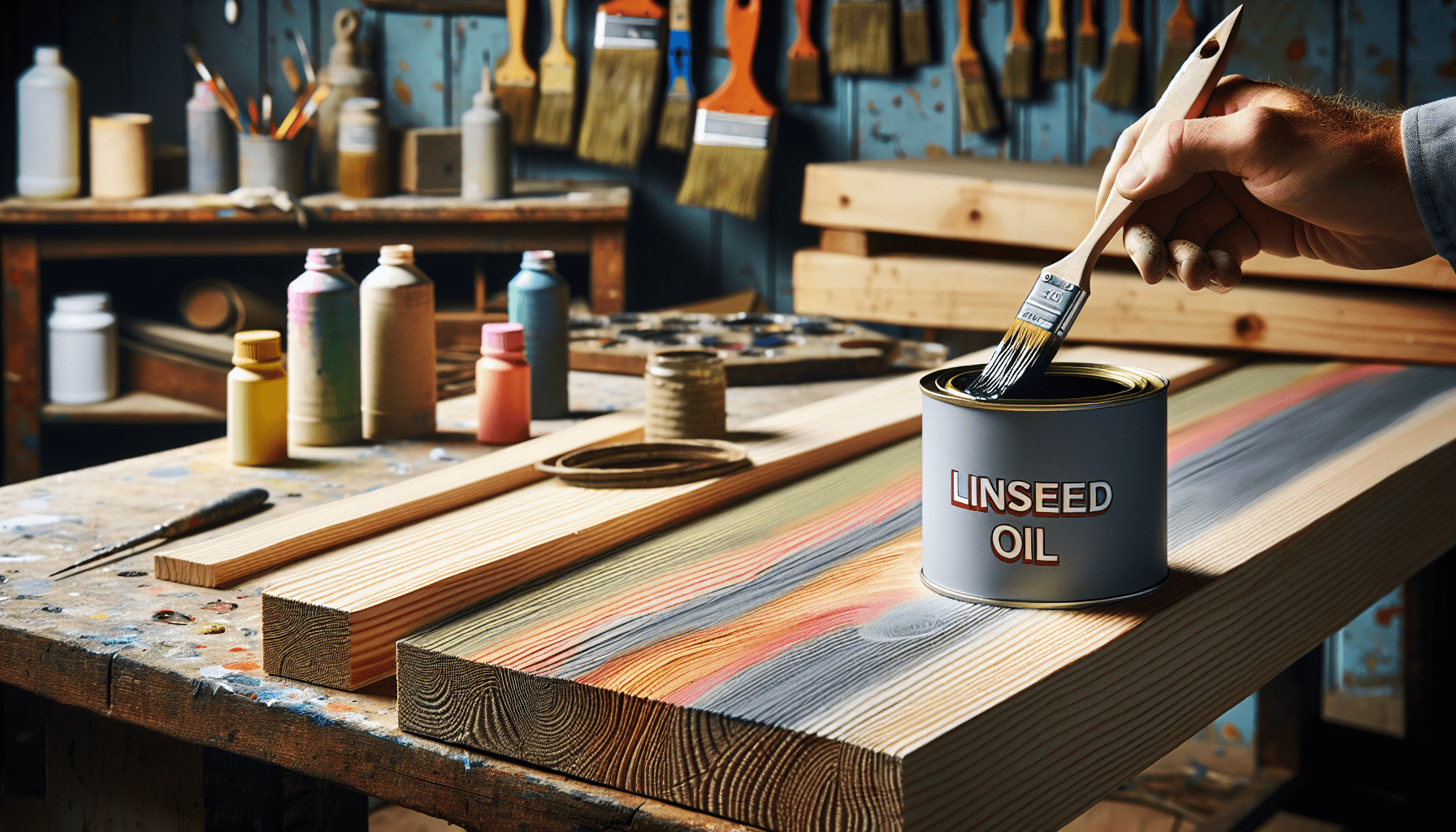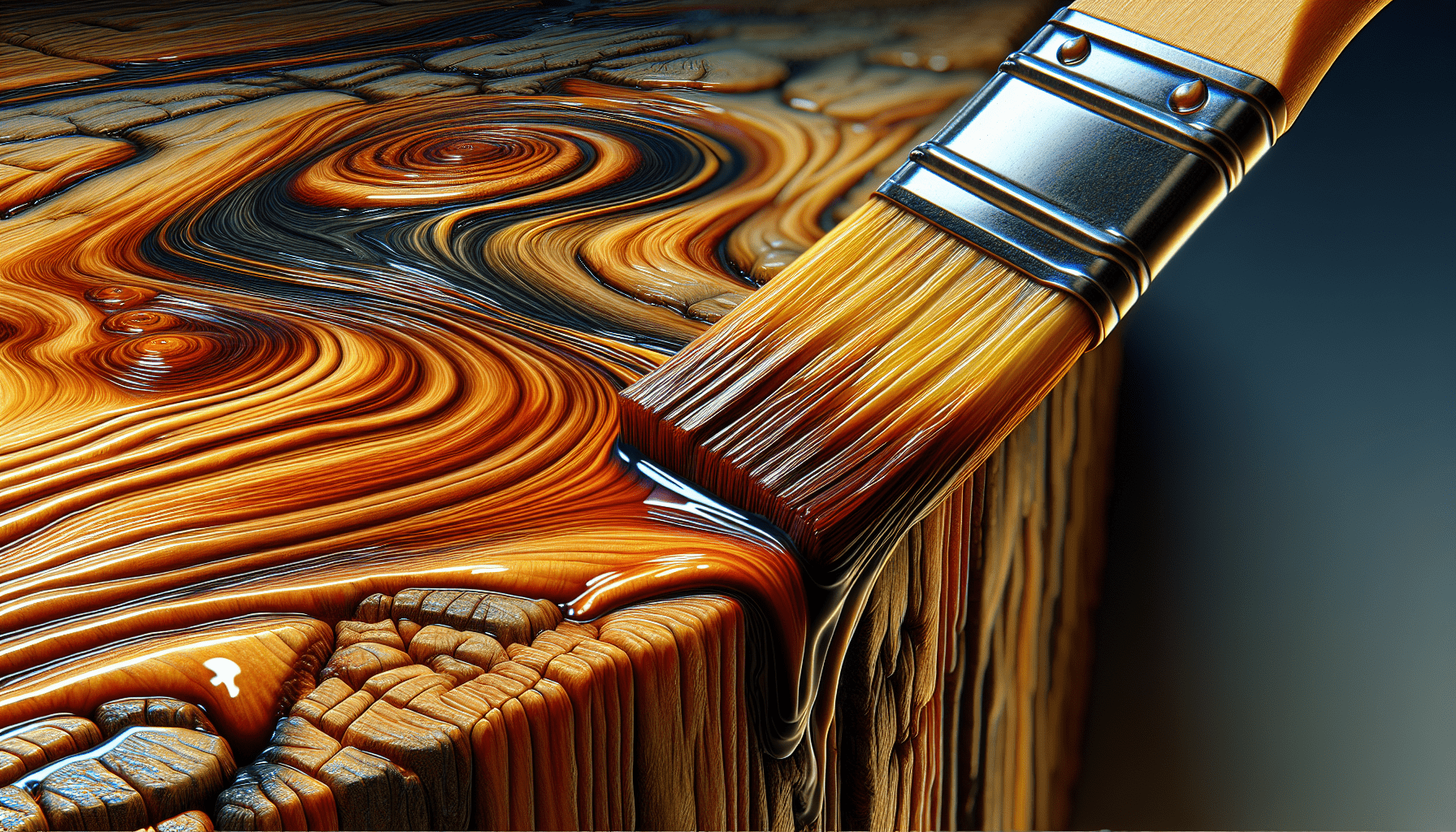Linseed oil has been a cornerstone in the world of painting for centuries, revered for its versatile applications and unique properties. In the article “What Is Linseed Oil Used For In Painting,” you will explore how this natural oil not only serves as a binding medium for pigments but also enhances the durability and flexibility of paint layers. You will learn about its role in creating various finishes, from glossy to matte, and its importance in extending the workability of the paint, allowing for intricate detailing and blending. This comprehensive overview sheds light on why linseed oil remains an indispensable tool in the artist’s repertoire. Have you ever wondered what role linseed oil plays in the world of painting, particularly in creating timeless works of art? As an artist or an art enthusiast, understanding the materials you work with can significantly enhance your appreciation of the craft and improve your techniques.

Introduction to Linseed Oil in Painting
Linseed oil, derived from the dried and ripened seeds of the flax plant, is a fundamental binding medium in oil painting. It has been a staple in the artist’s toolkit for centuries, prized for its unique properties that influence the behavior and longevity of paints. But what makes linseed oil so indispensable in painting?
Historical Context
Historically, linseed oil gained prominence as early as the Northern Renaissance period. Artists such as Jan van Eyck were among the first to harness its potential, developing advanced techniques that led to more vibrant and enduring artworks. The discovery and adoption of linseed oil revolutionized painting, allowing for the development of new styles and methods.
Composition and Properties of Linseed Oil
To appreciate linseed oil’s uses, you must first understand its composition and inherent properties. Linseed oil contains fatty acids, primarily alpha-linolenic acid, which contribute to its drying characteristics and film-forming abilities.
Types of Linseed Oil
Understanding the different types of linseed oil available is crucial for making informed choices in your painting practices. The following table outlines the primary types:
| Type | Description | Usage in Painting |
|---|---|---|
| Raw Linseed Oil | Extracted directly from flax seeds without additional processing | Enhances transparency and gloss; slower drying time |
| Refined Linseed Oil | Purified to remove impurities | Produces a clearer, less yellowing film; moderate drying speed |
| Cold-Pressed Linseed Oil | Extracted at low temperatures, retaining more natural properties | Superior quality for fine art; tends to yellow less than other types |
| Stand Oil | Heated and thickened without oxygen exposure | Ideal for glazing techniques; produces a smooth, durable, and non-yellowing film |
| Boiled Linseed Oil | Heated and mixed with dryers to speed up drying | Faster drying time; commonly used in industrial applications rather than fine art |
Chemical Properties
The drying process of linseed oil is due to polymerization and oxidation. When exposed to air, it undergoes a chemical reaction where it hardens into a solid, flexible film. This property is pivotal in forming a durable and protective coating over painted surfaces.
Applications of Linseed Oil in Painting
Linseed oil serves multiple purposes in painting, from acting as a binding agent to enhancing the physical properties of the paint. Here are some of the primary applications:
Binding Medium
One of the most critical roles of linseed oil in painting is as a binding medium. It mixes with pigment to form oil paints, offering excellent adhesion to surfaces.
Modifying Paint Consistency
Linseed oil helps in adjusting the consistency and flow of paint. Adding varying amounts of linseed oil can make the paint thicker or thinner, providing artists with the versatility to achieve desired effects, such as smooth blending or pronounced texture.
Enhancing Gloss and Transparency
Linseed oil increases the glossiness and transparency of oil paints, allowing for the creation of glazed layers that produce depth and luminosity. Artists can manipulate the oil paint’s sheen by adjusting the linseed oil content, resulting in either vibrant glossy finishes or muted matte appearances.
Improving Durability
Linseed oil’s ability to polymerize and form a stable film enhances the durability and longevity of a painting. A well-constructed oil painting using linseed oil can last centuries, enduring environmental stressors such as humidity and temperature fluctuations.
Reducing Yellowing
While natural yellowing can occur over time, specific types such as refined or cold-pressed linseed oil are known for reducing this effect. This is crucial for preserving the original tones and hues of a painting.
Techniques Involving Linseed Oil
Different painting techniques utilize linseed oil to achieve various effects and textures. Understanding these techniques can vastly improve your control over the medium.
Fat Over Lean
The principle of “fat over lean” is foundational in oil painting. This concept involves layering paint with increasing amounts of linseed oil (fat) over layers with less oil (lean). Following this rule helps to prevent cracking and ensures the paint layers adhere properly over time.
Glazing
Glazing involves applying thin, transparent layers of paint mixed with linseed oil over a dry underpainting. This technique allows artists to build up rich, luminous colors and create intricate depth, mimicking the effect of stained glass.
Scumbling
Scumbling includes applying a thin, opaque layer of paint lightly over another, allowing the underlayer to show through. Adding linseed oil to the top layer helps achieve a smoother application, enhancing subtle transitions and textures.
Wet-on-Wet
The wet-on-wet technique, where wet paint is applied over still-wet layers, benefits from linseed oil’s ability to increase paint flow and blendability. This method, often used by artists like Bob Ross, enables spontaneous and expressive painting.

Advantages and Disadvantages of Linseed Oil
Understanding the pros and cons of linseed oil will aid you in making better decisions regarding its use in your artistic practice.
Advantages
- Versatility: Linseed oil can be adapted for various painting techniques and effects.
- Durability: It creates a resilient, long-lasting film that protects the painted surface.
- Gloss and Transparency: Enhances the luminous quality and depth of colors.
- Binding Properties: Offers excellent adhesion to pigments and surfaces.
Disadvantages
- Yellowing: Some types of linseed oil can yellow over time, potentially altering the painting’s appearance.
- Drying Time: Depending on the type, linseed oil can have long drying times, requiring patience and proper timing during layering.
- Allergenic Potential: Some individuals may experience allergic reactions or sensitivity to linseed oil.
Best Practices for Using Linseed Oil in Painting
Utilizing linseed oil effectively requires adherence to best practices. These recommendations can help you achieve optimal results:
Storage and Safety
Store linseed oil in a cool, dry place in airtight containers. Proper storage prevents it from thickening prematurely. Additionally, follow safety guidelines, as rags soaked in linseed oil can spontaneously combust if not disposed of correctly.
Mixing and Application
Measure the amount of linseed oil carefully when mixing with paint to avoid over-thinning. Use palette knives or dedicated mixing tools to blend linseed oil with pigments thoroughly.
Layering Techniques
Adhere to the fat-over-lean principle to maintain the integrity and stability of your painting. Allow adequate drying time between layers to prevent cracking or adhesion issues.
Alternatives to Linseed Oil
While linseed oil is highly regarded, there are alternatives available that may suit different needs or preferences.
Poppyseed Oil
Poppyseed oil is less prone to yellowing and is often used for whites and lighter colors. It has a slower drying time than linseed oil, which can be advantageous for certain techniques but requires patience.
Walnut Oil
Walnut oil offers a clear, non-yellowing effect and is known for its smooth application and finish. However, it is less durable than linseed oil and may be more susceptible to the elements.
Safflower Oil
Safflower oil is another non-yellowing alternative, commonly used in lighter hues. It has similar drying times to poppyseed oil and provides a clear, stable film.
| Oil Type | Benefits | Drawbacks |
|---|---|---|
| Linseed Oil | Durable, enhances gloss and depth | May yellow over time, varying drying times |
| Poppyseed Oil | Minimal yellowing, slow drying | Less durable than linseed oil |
| Walnut Oil | Clear finish, smooth application | Less protective, more prone to damage |
| Safflower Oil | Non-yellowing, stable film | Longer drying times, less resilient |
Conclusion
In summary, linseed oil is a cornerstone in the realm of oil painting, valued for its multifaceted benefits ranging from its binding properties to its ability to enhance the visual qualities of paint. By understanding its history, properties, applications, and alternatives, you can leverage linseed oil to its fullest potential, enriching your artistic practice and preserving your works for generations to come.
Whether you are a seasoned artist or a beginner exploring oil painting, mastering the use of linseed oil can elevate your creations and deepen your engagement with this timeless art form.



